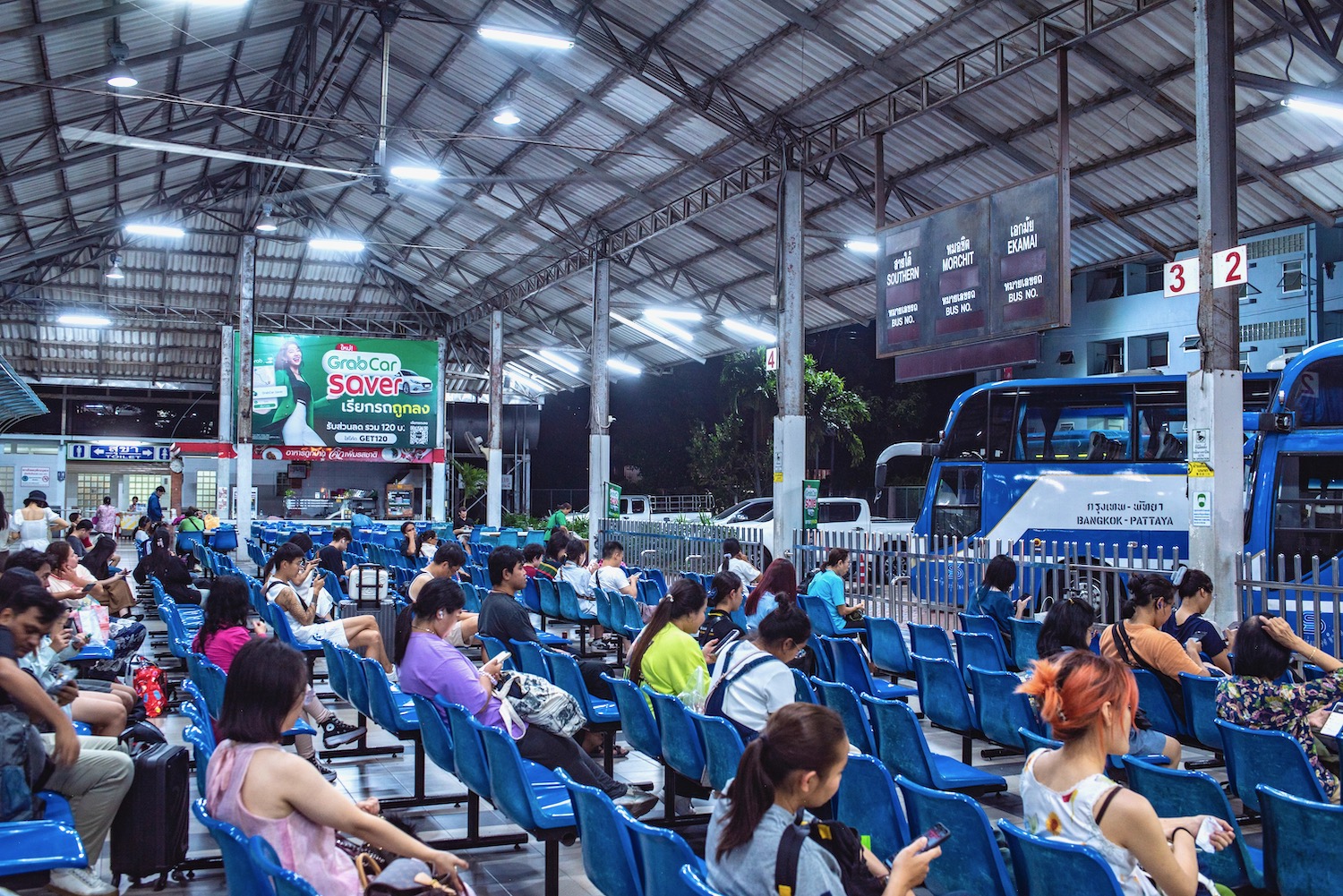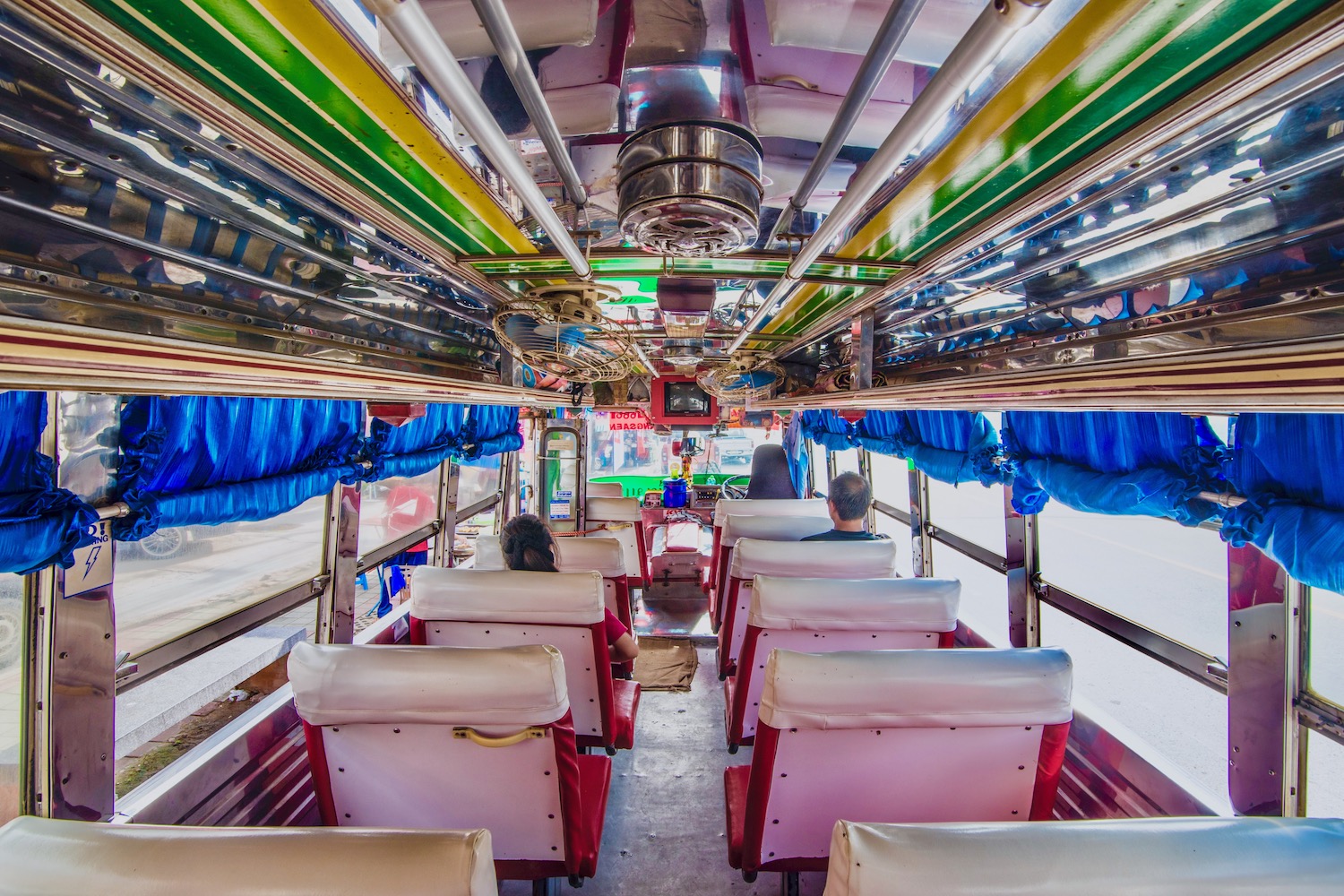One thing I’ve noticed, during the decade-plus I’ve been planning trips for people, is that buses tend to be intimidating. “I’m fine with trains,” traveler after traveler will tell me, “but I really don’t want to ride buses, if I can avoid it.”
The bad news? In some parts of Thailand, taking a bus is unavoidable. At least unless you’re prepared to hire a private driver—which, to be fair, many Westerners are.
The good news? It’s easy both to understand and to take buses in Thailand, as you’ll learn quickly if you stay with me for the next few paragraphs.
Why Thailand’s Buses Intimidate Foreigners
The purpose of my Thailand bus guide is to make the Kingdom’s buses accessible and easy to understand. Unfortunately, it’s not the way at the moment. Part of the reason why? The bus stations and stops themselves! The sheer quantity of vehicles alone can make your head spin, to say nothing of the fact that the vast majority of text on both signs and buses is in Thai.
Plus, it can be hard to know which bus to take in the first place, whether you’re catching a GreenBus Express VIP from Chiang Rai to Chiang Mai, or a white minivan from Bangkok’s Ekkamai Station to Pattaya or Rayong. When you combine information overload with the sensory overload of being in Thailand, this causes many people to throw up their hands and just pay for a private transfer.

Different Types of Buses in Thailand
Long-distance VIP buses
The most comfortable (and, arguably, the “easiest”) sort of Thailand buses are the so-called “VIP” buses that travel medium-to-long distance. Operated both by the government and by private companies, these travel between Bangkok to relatively nearby destinations such as Ayutthaya, Korat and Sukhothai and also between Chiang Mai and Chiang Rai.
Overnight buses
In my opinion, overnight buses amount to a less comfortable way of riding the bus in Thailand. First of all, unlike in South America (for example), overnight buses in Thailand don’t have fully-flat beds or real meal service. As a result, you are unlikely to get a good night of sleep, in spite of saving on the cost of a hotel. Moreover, overnight buses tend to be filled with loud people (in my experience).
Vans
If you’ve ever been to the Victory Monument area of Bangkok, you’ll have seen hundreds of vans picking up and dropping off thousands of passengers in a matter of minutes. These vans travel from Bangkok to points near and far, from Kanchanaburi in the west to Pattaya in the east, While the safety of these vans is questionable, their convenience and low price can’t be beat.
City buses
Like minivans in Thailand, local city buses in Bangkok come so often that you almost don’t need to time them out; you certainly don’t need to book in advance. However, these can be even more intimidating than any other form of transport, given the dozens of confusing routes, and the fact that most signage and announcements are completely in Thai. Most tourists simply book a ride with Grab, or take the BTS or MRT.
Bangkok BRT
Conversely, the Bangkok BRT (whose main station, Sathorn, is connected to Chong Nonsi BTS station), runs on a fixed line with stops that are well marked in English. On the other hand, very few tourist destinations are along the route, so it’s not extremely useful to tourists. If you do need to ride the BRT, note that it is sometimes free as a means of reducing pollution, making for an added bonus in using the service.

Is it Safe to Ride the Bus in Thailand?
The topic of safety in Thailand is controversial, to say the least. On one hand, Thailand has very little violent crime compared to the US and Europe. You’re also relatively unlikely to suffer petty theft of pickpocketing, unless you’re walking through a crowded market area, or literally leave valuable items somewhere. However, Thailand also has some of the most dangerous roads in the world.
With regard to buses in Thailand, there’s good news and bad news. To start with the good, bus drivers in Thailand tend to be professionals with many years of experience, particularly on long-distance routes operated by reputable companies. On the bad side, it’s not uncommon to hear about crashes, especially of white minivans, but also in some cases with long-distance buses as well.
Other FAQ About Buses in Thailand
How do you pay for bus in Thailand?
If you don’t buy your Thailand bus ticket online (for long-distance buses, this is), you’ll need to pay in cash at the bus station ticket office. For city buses, you can typically use a stored value card like Rabbit, though Bangkok is increasingly rolling out tap-to-pay wth Visa and Mastercard.
Do buses in Thailand have toilets?
Some long-distance buses in Thailand have toilets, but the vast majority of them don’t. The good news is that you will probably have at least one toilet break during journeys lasting longer than a couple of hours. Needless to say, make sure to use the restroom before boarding!
Can you eat on buses in Thailand?
In my experience, eating on long-distance buses in Thailand is fine, while it’s generally frowned upon if you’re taking a city bus. When in doubt, observe what locals are doing and follow their behavior. If many local people are eating, it’s probably OK for you to do so as well.

The Bottom Line
I hope you have a much clearer understanding of buses in Thailand now than you did when you navigated to this article. First, you need to know what type of bus is required for your journey. Most notably, on longer-distance journeys, it’s important to learn whether you need to take an actual bus, or one of Thailand’s notorious “white vans” (which are convenient, but not necessarily safe). Once you have the information you need, you can more or less relax until you reach your destination. Another amazing way to relax? Hire me as your Travel Coach, and let me sweat all the details of your Thailand trip.







